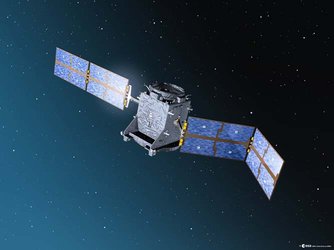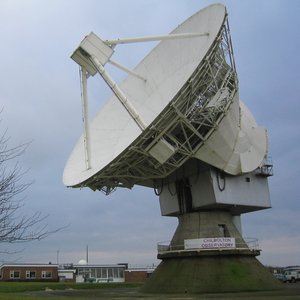How GIOVE’s signals show way for Galileo
Five years ago today, ESA’s GIOVE-A satellite began broadcasting Europe’s first navigation signal from space.That signal is still going strong, supporting this year’s debut of the full-scale Galileo navigation system.
Having been launched on 28 December 2005, it was two weeks later on 12 January 2006 that the first Galileo In-Orbit Validation Element satellite, GIOVE-A, began broadcasting a navigation signal synchronised with its rubidium atomic clock.
A second satellite, GIOVE-B, adding an ultra-precise passive hydrogen maser atomic clock, was launched on 27 April 2008 and began broadcasting its own signal from medium Earth orbit on 7 May 2008.

“These signals were required to formally secure Europe’s access to the allocated Galileo frequencies, while also allowing us to assess the on-orbit functioning of the two atomic clock designs at Galileo’s heart,” said Valter Alpe, managing GIOVE operations for ESA. “Meanwhile, we could also begin to test the kind of elaborate ground processing needed for the operational Galileo system.”
All satnav systems require a dedicated ground segment to provide continuous fine-tuning of the correction data broadcast through the navigation signal. Navigation satellites must keep the time extremely accurately: their signals contain precise timings.
Receivers triangulate a user’s position on Earth by calculating the distance travelled by four or more different satellite signals. Because these signals travel at the speed of light, their timings need to be ultra-accurate.
An onboard clock drifting forward or back by a billionth of a second translates into a 30 cm range error.
“The trick of the whole satellite navigation story is that the user is receiving not just the clock timing itself but also very slight corrections transmitted in the signal stating if the clock is running a few nanoseconds early or late,” said Valter.

“It takes a sophisticated ground segment to generate these corrections, but this process is essential for maintaining service accuracy.”
A worldwide network of operational ground sensor stations is being deployed for Galileo, with the first two Galileo In-Orbit Validation (IOV) satellites due for launch this year.
Galileo sensor stations receivers will provide range measurements to be relayed back to the Galileo Control Centre in Fucino, Italy, from where navigation corrections will be formulated and transmitted. This operating principle behind the worldwide network has already been validated as part of the GIOVE project.
| This article continues... |
|
| Next |
|















 Germany
Germany
 Austria
Austria
 Belgium
Belgium
 Denmark
Denmark
 Spain
Spain
 Estonia
Estonia
 Finland
Finland
 France
France
 Greece
Greece
 Hungary
Hungary
 Ireland
Ireland
 Italy
Italy
 Luxembourg
Luxembourg
 Norway
Norway
 The Netherlands
The Netherlands
 Poland
Poland
 Portugal
Portugal
 Czechia
Czechia
 Romania
Romania
 United Kingdom
United Kingdom
 Slovenia
Slovenia
 Sweden
Sweden
 Switzerland
Switzerland



































